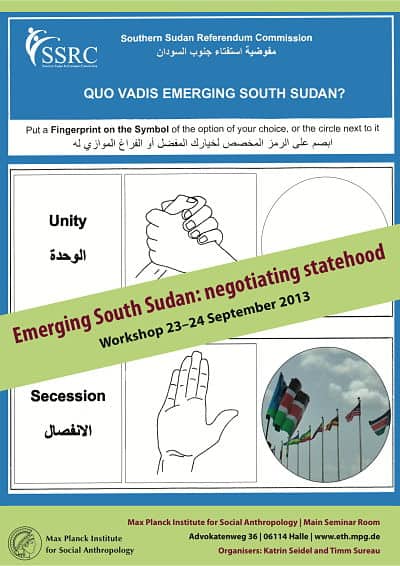What do you know: almost as soon as the AAA 2014 began, it came to its end. After one last exhausted round of parallel panels on Sunday morning, conference dwellers emptied their hotel rooms, and left the lobby of the ostentatious Washington Marriott Wardman Park in eerie emptiness. If only these walls, ornate carpets and beautifully decorated Christmas trees could speak – what all would they tell us of the state of our beloved discipline!
In the absence of such skills, I will do my utmost to offer you the next best thing via my eye witness account. What was the AAA like this time around – some of you may still remember our rather sordid account of AAA 2013. Did this grand collective performance feel equally disconcerting, with equally dubious meaning as last year?

Having fresh in mind how the EASA meeting was arranged at Tallinn University buildings that were tightly connected to the surrounding city, it feels bizarre to be cooped in a luxury conference hotel, even if its obvious practicalities make sense. A ‘European Savage’ cannot help but feel: scholarship is more at home at universities or other public contexts (which most universities in the US of course are not).
This isolation resonates with the undoubted key theme of this year: how can anthropology have an increasingly weighty impact on the surrounding world? This question was embodied in intense stand-taking to current issues unfolding around the meeting, namely demonstrations around police brutality in Ferguson.
And thank goodness for that! Otherwise the experience of gathering en masse with predominantly white anthropologists at yet another hotel embodying racially segregated staff – while intense demonstrations were ongoing just a few short miles away by the White House – would have been too mortifying. A few may recall our abhorrence from last year upon discovering the murals of the service quarters of the Chicago Hilton, which depicted some very candid racial stereotyping vis-à-vis the hotel staff.
The most important protest of AAA 2014 was the staged ‘Die-In’ accompanied by a 4.5 minute silence at the Marriott Lobby at 12:28 pm of Friday, Dec 5, under the slogan ‘Black Lives Matter’. Images quickly spread in the social media of hundreds of anthropologists laying around the Lobby’s floor, with many describing this as their most proud moment for being an anthropologist. A subsequent Statement on the matter was adopted on Dec 8 by the Association of Black Anthropologists.
But is this enough? Critical accounts argue that such public demonstrations do little to combat the underlying, deeply seated racism of anthropology. Are things as bad as this? Hard to tell – but at least we heard of no new accounts where coloured panelists were confused to the service staff – an infamous tale from AAA 2013.

The affair of Steven Salaita has certainly been important in uniting the academic community not only for supporting Palestine, but academic freedom more generally. It is reassuring that in the continually worsening university crisis our relatively conservative and slow-moving community is swift to take clear stands!
Yet it is evident that we could do much more.
This was conveyed also by the undoubted highlight of the meeting, namely Bruno Latour’s distinguished lecture, held at an enormous ballroom filled to the brim – with even its sound broadcast to the adjoining conference room to accommodate those left outside.
Throughout the meeting WiFi remained poor, yet a fair amount of tweets flew around, and the best quotes of Latour’s talk were closely captured – the most comprehensive job was undoubtedly by Jenny Carlson. Many of Latour’s arguments were covered in a recent issue by HAU: Journal of Ethnographic Theory, based on the all star Roundtable of AAA 2013 in which he discussed ‘the French Ontological’ turn with Philippe Descola and Marshal Sahlins.
What was his primary message this year? It forwarded an encouragement – even challenge – for anthropologists to seize the moment and assume the central role ushered to us with the turn to the ‘Anthropocene’. Latour concretized this argument by discussing his ongoing work among geologists and their efforts to transgress the borders conventionally established in between ‘nature’ and ‘human’, living and inanimate – distinctions that anthropologists are the experts in reconfiguring.

Such high expectations make it always intimidating to see the person in action. What if the magic fails to travel – if they are smug and arrogant?! Latour’s demeanour conveyed none of the above, at least not to this devoted fan. Whereas we criticized Povinelli’s performance as a failed attempt to introduce intimacy, for Latour this seemed to work. His engagement with excellent audience questions seemed sincere, he came forth as being genuinely present in the moment – and yes, the jokes worked too!
The concrete staging of his performance contributed to this atmosphere – a detail that offered a stark contrast for the staging and visual representations accompanying the meeting in general. We’re all familiar with the aesthetics of the AAA, so no surprises here, but let’s just say it once more: IT IS HOPELESSLY DATED, FADED, UNINSPIRING!!!
This sentiment was intensified by Anthropology TV, which was broadcast non-stop on large flat-screens around the Conference venue. Sadly, instead of generating excitement, this material in its unattractive lighting, careless framing and the air of general amateurism was off-putting – a sentiment intensified by its poor sound quality.
I am being crude, but for important reasons: our beloved discipline deserves better! As we have shown via Allegra – still operating virtually without a budget – this is not primarily a question of resources but of outdated mind-sets and attitudes. The footage from our panel on ‘Boredom, Intimacy and Governance in ‘Normalized’ Times of Crisis’ at the EASA 2014 illustrates some of the possibilities.
I hope that emphasising this will provide the needed provocation for improvements! We have a fantastically exciting discipline, not just in terms of substance, but also in terms of its visual components. Let’s embrace them and thus amplify our message and global visibility!
I obsess on this point also because of my final observation: the deteriorating global position of our discipline yields in worrying outcomes, which I saw embodied by many Conference participants. Grossly over-worked, wrought with professional uncertainty; relocating year after year for new short-term positions, postponing family plans, earning less than they would in almost any menial job outside the academia.
The academia sure is one relentless boss, settling for no light commitment but instead expecting oneself to devote one’s heart, soul and life to the full. The analogy to a drug gang may bear closer similarity than at first meets the eye.
The AAA 2014 showed that we are ready to stand up for crucial social issues. Next year, let’s challenge the reign of the ‘drug lord’ of the neoliberal academia – and get mobilized to challenge these continually worsening patterns!
Thanks one and all for this one – and see you at AAA 2015! And remember: take care of yourselves & each other!
***************************************
Thanks Niki Khan for the discussion on Bruno Latour and Julie Billaud & Antonio de Lauri for comments!
Photos are details of Christmas ornaments at the Omni Shoreham, the adjacent conference hotel, by Miia Halme-Tuomisaari. Image of staged Die-In is from the Facebook page of the Association of Black Anthropologists
The video from EASA 2014 is courtesy of Juho Reinikainen.







Correction: While there was unprecedented support for Palestine and the idea of a boycott on display at AAA2014, no statement in support of a boycott was passed. Instead, a resolution against an academic boycott was resoundingly defeated. Organizers for a AAA academic boycott decided to wait a year in order to educate the membership about this issue.
Thanks for the reporting.